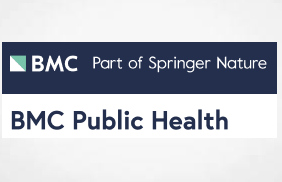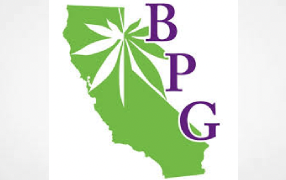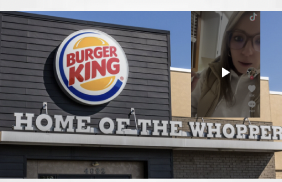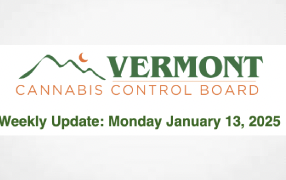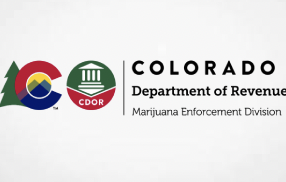BMC Public Health volume 24,
Article number: 2397 (2024)
Abstract
Background
In U.S. states that legalized and commercialized recreational cannabis, cannabis sales in illegal markets are still sizable or even larger than those in legal markets. This study aimed to assess cannabis consumers’ preferences for purchasing cannabis from legal and illegal markets and estimate the trade-offs under various policy scenarios.
Methods
963 adults were recruited, who used cannabis in the past year and lived in a state with recreational cannabis legalization. In a discrete choice experiment, participants chose purchasing cannabis from a legal dispensary or an illegal dealer with varying levels in product attributes including quality, safety, accessibility, potency, and price. Mixed logit models were used to analyze preferences.
Results
The likelihood of choosing legal cannabis increased with a higher quality, the presence of lab test, a shorter distance to seller, a higher tetrahydrocannabinol level, and a lower price. The likelihood of choosing illegal cannabis increased with a higher quality, a shorter distance to seller, and a lower price. Among product attributes, quality and accessibility were perceived to be the most important for legal cannabis and price was perceived to be the most important for illegal cannabis. Policy simulations predicted that improving quality, ensuring safety, allowing delivery services, increasing dispensary density, and lowering prices/taxes of legal cannabis may reduce illegal cannabis market share.
Conclusions
In the U.S., cannabis consumers’ preferences for illegal cannabis were associated with both legal and illegal cannabis product attributes. Policies regulating legal cannabis markets should consider potential spillover effects to illegal markets.
Introduction
A key argument for recreational cannabis legalization is that fostering open and competitive legal markets has potential to reduce the size of illegal markets and eventually eliminate them. [1] Cannabis sales in both legal and illegal markets may have adverse public health, social, and economic consequences. Because illegal markets are not regulated, however, there are more concerns on their product safety than legal markets, such as contamination with harmful chemicals, additives, and other drugs, and unknown or very high level of potency that increases the risk of overdose. Interaction with illegal dealers also increases the chance of being offered and initiating the use of other more dangerous illegal drugs. [2] Illegal cultivation often involves crimes, labor exploitation, and environmental damages. [3,4,5] State governments also lose billions of tax revenues from illegal cannabis sales. [6] In the U.S. and Canada, after legalization, the legal cannabis markets have expanded dramatically. [7,8,9,10] Nonetheless, cannabis sales in illegal markets are still sizable or even larger than those in legal markets. For example, illegal cannabis sales in California reached $8 billion annually, twice as large as legal sales, in 2021 after three years of cannabis commercialization. [11] The assumption that cannabis consumers would switch from illegal markets to legal markets seems lacking data support after years of recreational cannabis legalization and legal market expansion. Understanding the causes of demand for illegal cannabis and implementing regulatory strategies to divert demand from illegal to legal markets are urgent tasks for cannabis policymaking.
Little research has examined cannabis consumers’ choices between legal and illegal cannabis, mainly because data on legal and illegal market transactions at individual level are often not concurrently available to researchers. The only two studies by Amlung et al. conducted hypothetical purchase tasks among U.S. and Canadian cannabis consumers to estimate the responsiveness of cannabis demand for legal and illegal sources to prices of the products from the two sources. [12, 13] They found that a greater price of cannabis from one source motivated substitution with cannabis from the other source. Such substitution was asymmetric: cannabis consumers attached a greater preference to legal cannabis than illegal cannabis. Price was the only factor assessed in these studies.
Lower prices in illegal cannabis markets have been a common explanation for illegal sales continuing to surpass legal sales. [14] Costs of legal cannabis include licensing fees, excise and sales taxes, rent for a storefront, advertising expenses, and non-monetary efforts such as application for licenses, staff training, and following various regulatory requirements, all of which are not paid by illegal sellers. It is plausible to assume that prices of legal cannabis are higher than those of illegal cannabis if these additional costs are at least partially passed on to consumers. Canada data after recreational cannabis legalization seem to support this assumption. [15]
Price, however, is not the only factor influencing cannabis consumers’ choices between legal and illegal cannabis. [16,17,18] For example, cannabis sold in legal markets presumably has a better quality because licensed cultivators need to meet certain cultivation conditions and follow safety regulations and cultivation procedures. [19] Legal products are required to do lab tests for cannabinoids, terpenes, and contaminations from chemicals, pesticides, heavy metals, etc., so product safety is to a large extent guaranteed. Labels are also required on legal cannabis packages to inform potency levels for tetrahydrocannabinol (THC) and cannabidiol. In contrast, illegal cannabis does not need to comply with these requirements. One Canadian report found that illegal cannabis was more contaminated and inaccurately labeled than legal cannabis. [20] Consumers hence likely prefer legal cannabis to illegal cannabis because of these factors when prices are equal. Further, in the U.S. local jurisdictions opt in or out for dispensary licensing, which introduces huge variations in accessibility of legal cannabis. In cities that do not license dispensaries or have strict zoning or density ordinances may make legal cannabis hard to access and unintendedly leave room for illegal markets. The list of factors explaining demand for legal and illegal cannabis can continue. Empirical research is needed to estimate the potential impacts of policies regulating these factors.
This study aimed to assess cannabis consumers’ preferences for purchasing cannabis from legal and illegal markets and estimate the trade-offs under various hypothetical policy scenarios. We adopted discrete choice experiment (DCE), a common approach in tobacco research and health economics. [21, 22] In a DCE, participants are asked to choose between hypothetical alternatives described by a series of attributes with varying levels. There are several advantages of DCEs relative to observational data from population surveys or sales transactions. DCEs directly elicit participants’ choices between different alternatives, so data on individual choices between legal and illegal cannabis can be made available to researchers. Because choices are hypothetical, DCEs provide opportunities to examine choices that do not yet exist in reality, so the impacts of a potential policy could be estimated. DCEs usually yield stronger causal inferences because they control choice attributes and associated levels and estimate within-individual variations. In this study, we focused on five cannabis attributes including quality, safety, accessibility, potency, and price. We assessed users’ preferences in general cannabis consumer population as well as subgroups categorized by cannabis use purposes and frequency. To make the findings more relevant and useful to policymaking, we also performed policy simulations to estimate market shares of legal and illegal cannabis under different policy scenarios.
